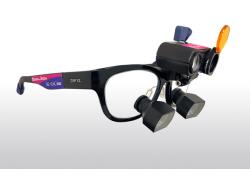- About Us
- Advertise
- Editorial
- Contact Us
- Terms and Conditions
- Privacy Policy
- Do Not Sell My Personal Information
© 2025 MJH Life Sciences™ and Dental Products Report. All rights reserved.
The 5 new words of dental practice ... and what you should know about them
In 2008, the American Dental Educators Association (ADEA) formed a committee charged with assembling a glossary of terms for dental educators. Their labors were published in July 2010 Dental Clinics of North Americas. They found this necessary because the teaching of dentistry had changed in light of CAMBRA-Caries Management by Risk Assessment.
In 2008, the American Dental Educators Association (ADEA) formed a committee charged with assembling a glossary of terms for dental educators. Their labors were published in July 2010 Dental Clinics of North Americas. They found this necessary because the teaching of dentistry had changed in light of CAMBRA-Caries Management by Risk Assessment.
The words used were from a time when surgical treatment was the only option for dental diseases. Redefining words in light of the current science was overdue. Some changes that occurred redefined words and gave a framework to instructors and clinicians alike. The word “Watch” was defined and declared as obsolete. “Watch” would no longer be used as a term that educators can teach in the context of this century.
The modern millennial dental hygienist is very comfortable with “Watch” being obsolete. We have products and support that allow enamel healing, brush biopsies of minute visible changes, and ways to detect and treat a periodontal infection before it destroys bone, so there’s no good reason to passively watch anything. We have a great scientifically minded group of people who know that watching is not helping, and every little defect can be treated or a protocol administered.
Not far enough?
Sometimes we have to go backward to go forward. Take a look at these words -- caries, restoration, prosthesis, and diagnosis. Since you’re a program graduate, there’s probably never been a reason to look at the definition of those words in your daily life. You found a definition that works for you back in school and you’re using it, right? Why not act like it? No definition of caries includes the phrase fluoride deficiency (as we discussed last time). Yet when a tooth presents with a cavity in it, from whatever cause, fluoride is the first treatment that comes to mind … and too often it’s the only treatment. Caries is a bacterial infection that manifests as damaged enamel as does GERD.
Restoration is a word we routinely swap out for prosthetic in dentistry. The words should live in the two different worlds of dental hygiene and dentistry. Dental hygienists restore the mouth to health and dentists place prosthetics to restore function. Not many dentists want anything to do with prosthetics. However, they don’t mind placing restorations. The questioning nature of millennials forces this wordplay into the foreground. Industry has provided oral health care practitioners with the tools and means necessary to restore the oral flora and enamel back to health. We now have to alter our language to be more accurate.
In medicine, there’s a diagnosis and a treatment. An appendectomy is the treatment for appendicitis. In dentistry, we skip over the diagnosis and go right to treatment, as if every diagnosis were identical. This lack of diagnosis, the why of the condition that needs the treatment, has really kept our profession in the dark. We’re still doing dentistry and dental hygiene too much like we were doing it in the 1980s. Sure, we’re using loupes, seeing more patients more often, but we’re still scraping hard deposits off of teeth with sharpened instruments and educating patients on how to keep their teeth a lifetime. All are treatments. Looking for a diagnosis first, a reason why the teeth are decaying or a periodontal lesion is presenting, is how we can better relate treatments to or patients. They’re expecting that from us.
Related: 4 reasons Modern Millennial Hygienists should track their production numbers
The scientific age
We’re now living in an age when our understanding of disease, mixed biofilm, obesity, and foodstuffs that are altered at the genetic level has changed in the last generation. Our knowledge base changes twice a generation, so jumping to treatment without diagnosis is dangerous and expensive. Is that periodontal condition exasperated by a food allergy or sleep apnea, or an undiagnosed tongue tie? Is that cholesterol profile out of sorts because of the inflammatory load caused by an untreated periodontal infection that includes a fungus that is growing in the periodontal biofilm? Those are burning questions that should be asked by the oral healthcare provider.
Related: 5 downtime activities to show you are an indispensable Modern Millennial Hygienist
There you have it … the 5 words that need to be redefined and their true meaning needs to be dusted off and internalized. When you ask why an oral condition has arisen and make a proper diagnosis, you will be amazed by the rise in treatment acceptance. With increased treatment acceptance comes increased income. Millennials like a paycheck as much as anyone else, that’s certainly something they have in common with the Boomers and Gen Xer’s.
Next time, we will look at what BOP does or doesn’t mean and delve further into compensation. We look forward to your thoughts and comments.
Check out the other health topics on
Cross Link Radio
on BlogTalkRadio



